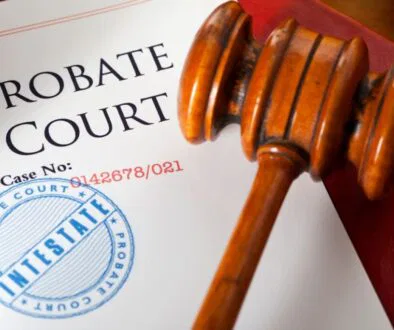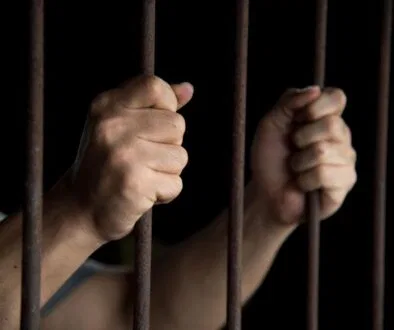Prison Furlough: What You Need To Know

Published on February 11, 2021
When it comes to the criminal justice system in the United States, you can easily get lost in its various terminologies. You will hear lots of technical lingo being thrown around, which can make you feel clueless at times. In this article, we’ll be tackling something known as “prison furlough” – what it is, why it’s given, and who’s eligible to receive it.
Prison Furlough Definition
As defined by the Federal Bureau of Prisons, a prison furlough is “an authorized absence from a federal prison by an inmate who is not under escort of a staff member, U.S. Marshal, or state or federal agents.” This leave varies in length, from a few hours to a week. Furloughs that last a few hours are called “day furloughs,” while those that last more than a day are “overnight furloughs.”
The length of an inmate’s furlough will vary according to a set of factors and their situation. These furloughs are applied for and granted by the Federal Bureau of Prisons itself too.

ADVERTISEMENT
Why is it given?
Furlough is a privilege, not an entitlement. Contrary to popular belief, it is not a reward for good behavior, nor is it a means to shorten one’s sentence. It’s a program provided to inmates for specific reasons, including medical leave and attending a loved one’s funeral, to name just a few. Furloughs are thus classified according to their purpose. They may be “transfer furloughs” or “non-transfer furloughs.” Transfer furloughs involve taking a prisoner to another Bureau facility, a non-federal facility, or community confinement. Anything that falls outside of that definition is a non-transfer furlough.
The primary goal of prison furlough is to rehabilitate prisoners and help them reintegrate into society. The United States locks up more people than any other country in the world, housing 25% of the world’s prison population. One of the objectives of prison furlough is to curb alarmingly high recidivism rates in the country. Recidivism refers to the tendency of released inmates to return to prison.
While prison furloughs may be granted for medical and transfer reasons, the leading cause is social furloughs. Social furloughs allow inmates to spend some much-needed time away from prison with their loved ones. This temporary leave can easily be the highlight of an inmate’s sentence.
Who is eligible?
There are different eligibility requirements between transfer furloughs and non-transfer furloughs. There are also different conditions for each transfer furlough situation, as listed below.
- Inmates transferring to administrative, low, medium, and high-security facilities are typically ineligible to participate in transfer furloughs.
- Apart from those mentioned in the previous situation, inmates may participate in transfer furloughs if:
- They are mentally and physically capable of completing the furlough.
- They display sufficient responsibility to ensure that transfer furlough requirements are met.
- Along with the requirements in section B, prisoners transferring to minimum security facilities must also:
- Be transferring from a low or medium-security facility
- Qualify for placement in a minimum-security facility with their security designation and custody classification at the time of the transfer
- Prisoners transferring to community confinement also need to meet the requirements in section B. Additionally, they should also be eligible for community confinement according to their security designation and custody classification at the time of the transfer.
As for non-transfer furloughs, these are the following conditions:
- If a prisoner has been confined at an institution for less than 90 days, they may only be considered for an emergency furlough.
- If a prisoner has more than two years until their projected release date, they may only be considered for an emergency furlough.
- If a prisoner has less than two years until their projected release date, they may only be considered for an emergency furlough or a routine day furlough.
- If a prisoner has 18 months or less until their projected release date, they may only be considered for an emergency furlough, a routine day furlough, or a routine overnight furlough within the institution’s commuting area.
- If a prisoner has 12 months or less until their projected release date, they may only be considered for an emergency furlough, a routine day furlough, a routine overnight furlough within or outside the institution’s commuting area.
Reduce Your Jail Call Costs By Up To 90% Per Minute With GlobalTel
GlobalTel’s inmate calling service lowers jail call per minute rates by up to 90% for jail calls from US facilities. Sign up now and use the special jail call phone number we create for you to eliminate the long distance jail call fees. Try GlobalTel for only $45.99 for 90 days. Make US/domestic and international jail calls at the local rate and stay connected to your incarcerated loved ones for less. Learn more about how to sign up for calls from inmates here.

This Content Is Fact Checked
Our esteemed team of specialists has thoroughly validated the accuracy of this information. Discover further details about the rigorous editorial guidelines for our website here.
ADVERTISEMENT

About The Author
Judy Ponio is a professional writer for the GlobalTel blog. She works hard to ensure her work contains accurate facts by cross checking reputable sources and doesn’t settle for less. Her passion for telling stories about true crime and criminal justice has allowed her to create hundreds of articles that have benefited millions of people.




